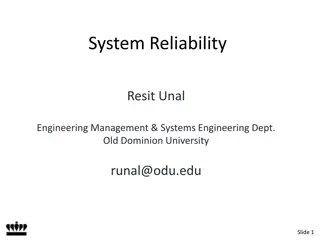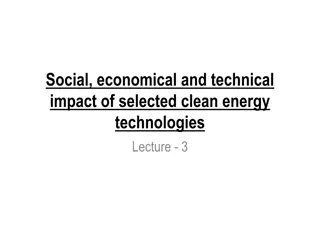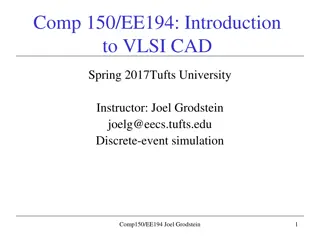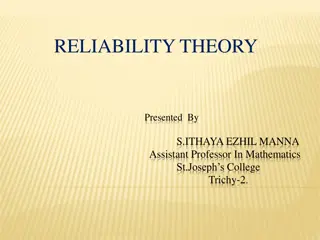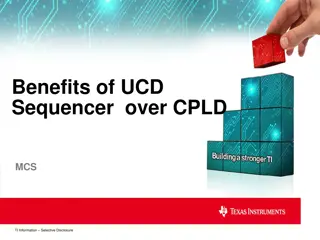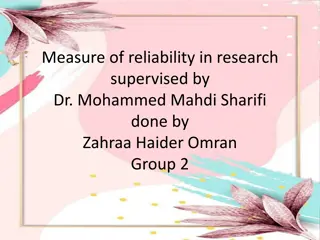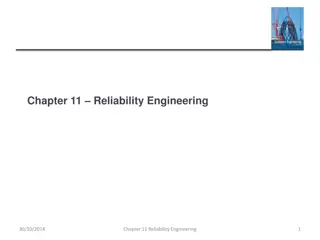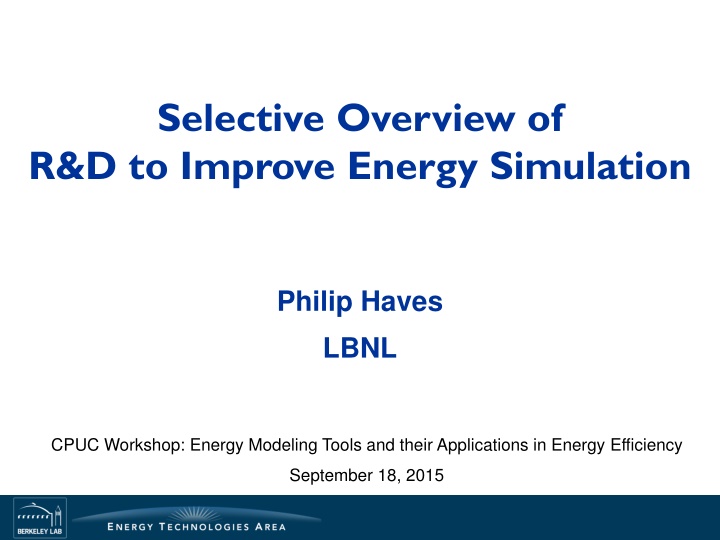
Enhancing Energy Simulation for Improved Reliability
This overview delves into the R&D efforts aimed at enhancing energy simulation for improved reliability in various applications such as building design, operation, policy support, and energy efficiency programs. The focus is on addressing challenges related to uncertainty, variability, and validation to ensure accurate energy performance predictions for new constructions and retrofits. The discussion also touches on the validation process, the limitations of current testing methods, and the need for empirical testing facilities like LBNL FLEXLAB and ORNL FRP. Overall, the goal is to elevate the credibility and accuracy of energy simulation tools to enable better decision-making in the energy sector.
Download Presentation

Please find below an Image/Link to download the presentation.
The content on the website is provided AS IS for your information and personal use only. It may not be sold, licensed, or shared on other websites without obtaining consent from the author. If you encounter any issues during the download, it is possible that the publisher has removed the file from their server.
You are allowed to download the files provided on this website for personal or commercial use, subject to the condition that they are used lawfully. All files are the property of their respective owners.
The content on the website is provided AS IS for your information and personal use only. It may not be sold, licensed, or shared on other websites without obtaining consent from the author.
E N D
Presentation Transcript
Selective Overview of R&D to Improve Energy Simulation Philip Haves LBNL CPUC Workshop: Energy Modeling Tools and their Applications in Energy Efficiency September 18, 2015
Goal Improve the Reliability of Energy Simulation in Use: Practitioners: design and operation Policy and program support e.g. DEER Requires: Accurate, explicit modeling of low energy and conventional buildings and systems Characterizing and estimating the effects of uncertainty manage risk of investing in energy efficiency 2
Challenge Sources of differences: Uncertainty: model algorithms input parameters modeler decisions Variability: weather occupancy operation controls, O&M as-built vs. as-designed issue for low-energy buildings Minimize, then quantify Source: Energy performance of LEED-NC buildings, NBI, 2008 3
Goals of Current Research Validation: Enable substantial improvements in the energy performance of new construction and major retrofits by increasing the accuracy and credibility of all energy simulation tools. Uncertainty: Facilitate the management of risk associated with the procurement of high performance buildings by characterizing the uncertainty of energy performance predictions. 4
Doesnt BESTEST Validate Energy Calculations? ASHRAE Standard 140 Method of Test for Evaluation of Building Energy Analysis Computer Programs is based on IEA BESTEST procedures: Standard 140 tests & partially validates energy calculations Analytical tests idealized cases partial validation Comparative tests - no ground truth The Standard 140 framework accommodates empirical tests but does not (yet) include any We now have facilities to make cost-effective empirical testing possible: LBNL FLEXLAB ORNL FRP NREL HVAC 5
Model algorithm validation new DOE project Generate sets of measured data for simulation model validation: Set priorities based on Validation Roadmap and input from TAG Conventional systems ( existing Standard 140 cases) Low energy systems Control of multi-zone systems HVAC performance maps EnergyPlus and commercial programs 6
Experimental Facilities - LBNL LBNL: FLEXLAB 4 matched pairs of 20 x30 test cells 1 pair of cells rotates Reconfigurable south fa ade Radiant slab and panels 7
Experimental Facilities NREL and ORNL NREL: HVAC test facility ORNL: Flexible Research Platforms (FRP) Two buildings: Performance maps of HVAC components 10 tons Two story, 5 zones per floor Single story, large zone Uncertainty < 5% 8
Uncertainty characterization DOE Implement a framework for estimating the uncertainty of simulation results: Georgia Tech funded by NSF: probability distributions for 75 common/important input parameters: Insulation R-value per inch Luminaire power Develop a representation of model form uncertainty driven by validation data Extend the implementation of the input parameter uncertainty framework in OpenStudio Simulation results: X Y 9
User Variability Experiment on 12 practicing eQuest modelers: Each given identical plans and schedules for relatively conventional middle school 3 hours Input differences: internal gains, HVAC need for more explicit modeling protocols(?) Electric Consumption Gas Consumption 4000 45000 1 40000 3500 1 2 3 4 5 6 7 8 9 10 11 12 2 35000 3000 3 30000 4 2500 25000 5 kWh 2000 kBtu 6 20000 7 1500 15000 8 10000 1000 9 5000 10 500 0 11 X stdev 0 0 2 4 6 8 10 12 12 -5000 -3 2 7 12 Month Month Source: Pam Berkeley, Philip Haves and Erik Kolderup. Proc. SimBuild 2014, ASHRAE/IBPSA-USA 10
New project: Accuracy of HVAC Load Predictions - Validation of EnergyPlus and DOE-2 using FLEXLAB Characterize differences between EnergyPlus and DOE-2.1e and DOE-2.2 Use FLEXLAB to adjudicate between EnergyPlus and DOE-2 Start with ASHRAE Standard 140 Tests: thermal Mass o night-set-up/setback o night ventilation o Report problems with DOE-2 Fix and document any problems with EnergyPlus 11
Conclusions Need for ongoing development validated models and procedures for: High performance new construction Deep retrofits Building operations Policy and program data Impact of validation and uncertainty characterization: Designer confidence: direct energy savings from greater user of advanced low-energy systems and improved integrated design Investor confidence: management of risk scaling up of high performance building projects 12




